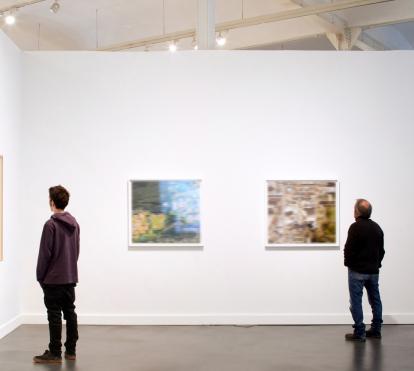
William Blake (1757-1827). Visions in British Art. CaixaForum Madrid
02.07.12
2 minutes readEngraver, painter, poet. The archetypal complete artist, William Blake (London, 1757-1827) was widely misunderstood and scorned in his day. However, he now unquestionably occupies a prominent position in the history of western culture thanks to his original and visionary concept of art, fuelled by his rejection of social, religious and academic dogmas. Rebellion and mysticism are the defining characteristics of his work.
Through his engraving, painting and writing, Blake interpreted the great political and social events of his day, questioning the status quo and seeking new artistic techniques that would better enable him to express his concerns. In this, he distanced himself from the neoclassical conventions that were so closely associated with the ideas of the Enlightenment. Blake's work is also inextricably linked to the visions that accompanied him throughout his life, and from which he obtained a constant source of inspiration. In depicting these visions, he created a unique iconography that transports the viewer into a mythical realm where the forces of Good and Evil are locked in eternal combat.
William Blake (1757-1827). Visions in British Art, organised by Tate Britain and produced by ”la Caixa” Foundation, takes a fresh look at the artist and his influence on later British art. Comprising more than one hundred works ? seventy by Blake himself and another thirty by outstanding British artists influenced by his legacy ? Visions is the first exhibition on this extraordinary artist to be organised in Spain since 1996.
William Blake (1757-1827). Visions in British Art. Dates: 4 July - 21 October 2012. Place: CaixaForum Madrid (Paseo del Prado, 36). Organised by: Tate Britain. Produced by: ”la Caixa” Foundation. Curator: Alison Smith, Curator (Head of British Art to 1900), Tate Britain, London. More information in the PDF press release